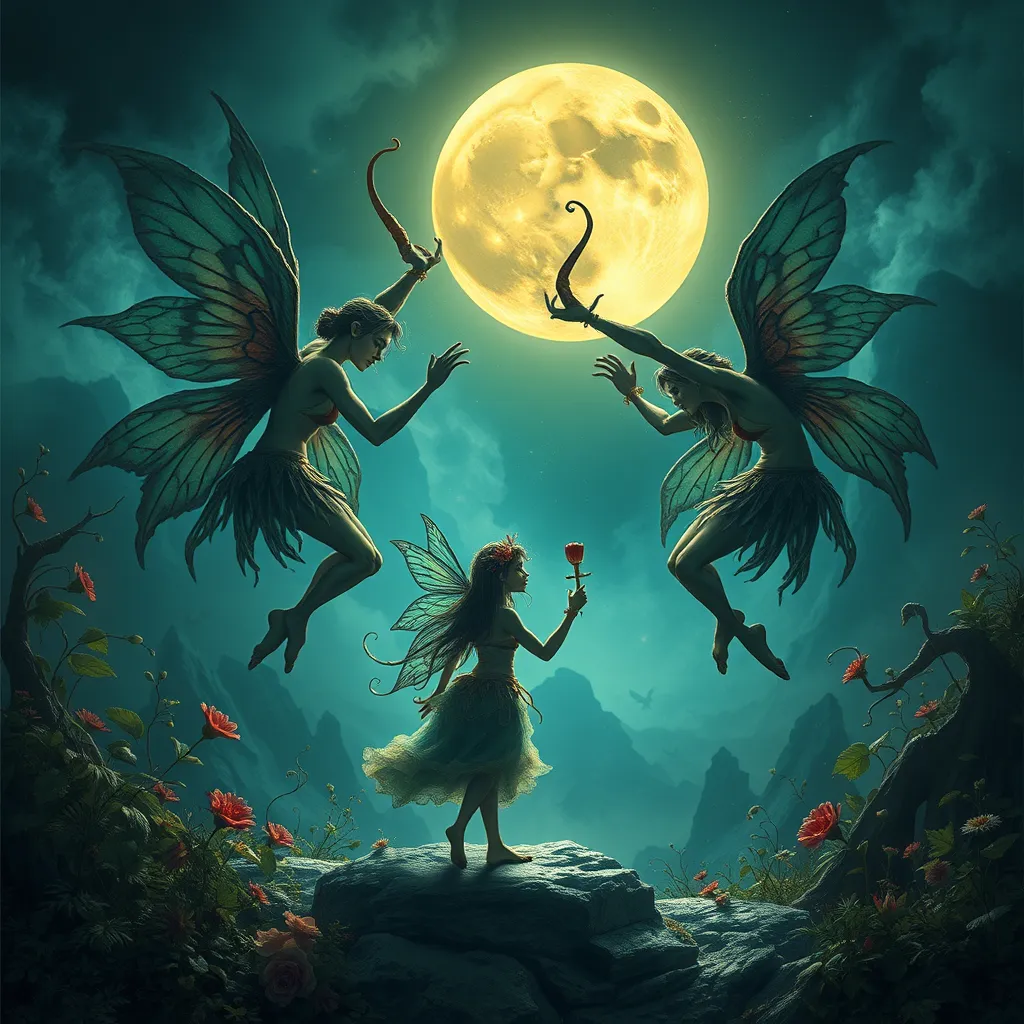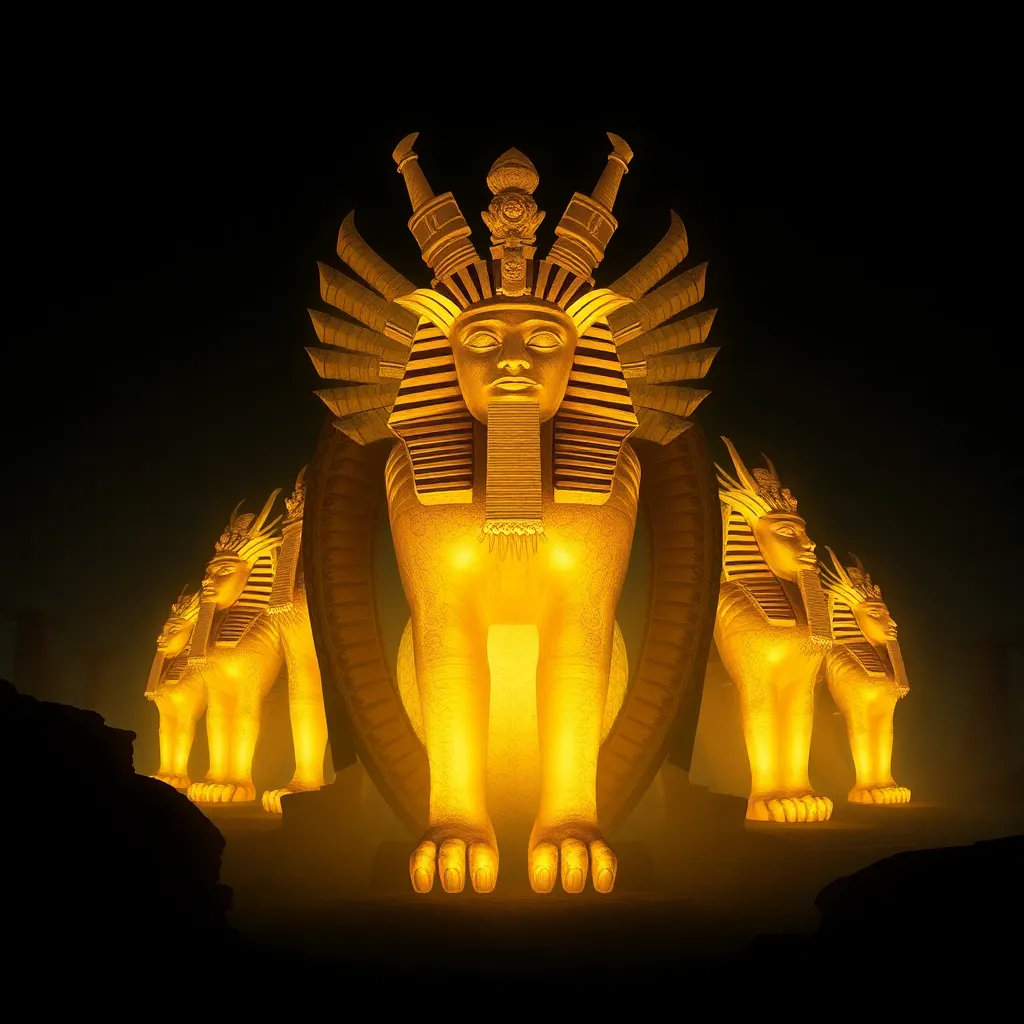The Fairies of the Caribbean: From the Duendes to La Llorona
I. Introduction
Fairies in Caribbean folklore embody a rich tapestry of myth and tradition, representing a blend of cultural influences that have shaped the region’s identity. These enchanting beings, often mischievous or sorrowful, play a significant role in storytelling, serving as vessels for moral lessons and cultural values.
Fairy tales and legends are integral to Caribbean culture, reflecting the diverse heritage of its peoples. They not only entertain but also teach important life lessons, connect generations, and preserve historical narratives. This article delves into two prominent figures in Caribbean folklore: the mischievous Duendes and the sorrowful La Llorona, exploring their characteristics, cultural significance, and the lessons they impart.
II. The Cultural Significance of Fairies in the Caribbean
The origins of fairy tales in the Caribbean can be traced back to the region’s complex history, marked by the intertwining of African, Indigenous, and European cultures. This melting pot of traditions has given rise to unique stories that reflect the values, beliefs, and experiences of its inhabitants.
- Historical Context: The arrival of enslaved Africans, colonizers, and Indigenous peoples created a rich narrative landscape where fairy tales flourished.
- Oral Tradition: Oral storytelling has been crucial in preserving folklore, with tales passed down through generations, often evolving with each retelling.
- Influence of Cultures: The blending of African, Indigenous, and European myths has enriched Caribbean fairy tales, resulting in unique characters and narratives.
III. Understanding Duendes: The Mischievous Spirits
Duendes are often depicted as small, elf-like creatures known for their playful and mischievous nature. They are believed to inhabit forests, caves, and homes, where they can either bring good luck or cause trouble.
A. Description and Characteristics of Duendes
Typically described as small beings with pointed ears and a penchant for mischief, Duendes are thought to be guardians of nature and are often associated with the spirit world. Their appearance can vary widely, influenced by local interpretations.
B. The Various Roles Duendes Play in Caribbean Folklore
Duendes serve multiple roles in the folklore of the Caribbean:
- Tricksters: They often play pranks on unsuspecting individuals, serving as a reminder to be cautious and respectful of the natural world.
- Protectors: In some tales, they are viewed as guardians of the forest and its creatures, highlighting the importance of environmental stewardship.
- Messengers: Duendes can act as intermediaries between humans and the spirit world, delivering messages or warnings.
C. Stories and Legends Surrounding Duendes in Different Caribbean Nations
Numerous stories of Duendes exist throughout the Caribbean. For example:
- Puerto Rico: The Duende is often depicted as a mischievous trickster who hides in the woods and plays tricks on children.
- Cuba: Known as “El Duende,” these spirits are believed to help or hinder farmers, depending on their mood.
- Dominican Republic: Stories tell of Duendes who steal children if they misbehave, serving as a cautionary tale for parents.
IV. La Llorona: The Weeping Woman
La Llorona, or “The Weeping Woman,” is a prominent figure in Caribbean and Latin American folklore, known for her haunting cries and tragic story.
A. Origins and Evolution of the La Llorona Legend
The legend of La Llorona has its roots in pre-colonial Indigenous tales, later influenced by Spanish colonization. Various interpretations have emerged, but the core story remains consistent: a woman mourns the loss of her children, often due to her own actions.
B. Symbolism of Grief and Loss in La Llorona’s Story
La Llorona represents deep themes of grief, loss, and remorse. Her sorrowful wails resonate as a warning to those who may take their loved ones for granted.
C. Regional Variations of the La Llorona Tale Across the Caribbean
Different Caribbean nations have their unique takes on La Llorona:
- Mexico: The most famous version, where she is depicted as a mother who drowned her children in a fit of rage, now wanders the rivers searching for them.
- Cuba: In Cuba, La Llorona is often associated with the sea, lamenting for lost love and her children.
- Puerto Rico: Here, she is sometimes seen as a protector of children, warning them to stay away from dangerous waters.
V. Comparisons and Contrasts: Duendes vs. La Llorona
A. Themes of Mischief Versus Sorrow in the Two Figures
While Duendes embody playful mischief, La Llorona represents profound sorrow. This contrast highlights different human experiences and emotions, serving various functions in storytelling.
B. Cultural Representations and Artistic Interpretations
Both figures have inspired countless artistic interpretations, from literature to visual arts, showcasing their impact on Caribbean culture.
C. Impact on Community Values and Moral Lessons
Duendes teach lessons about respect for nature and community, while La Llorona serves as a cautionary tale about the consequences of one’s actions and the importance of family ties.
VI. The Role of Fairies in Modern Caribbean Society
A. How Fairy Tales Influence Contemporary Culture and Media
Fairy tales continue to influence modern culture, appearing in films, literature, and art, shaping the identity of Caribbean communities.
B. Preservation of Folklore Through Festivals, Literature, and Art
Festivals celebrating these legends, along with books and art, play a crucial role in keeping these stories alive.
C. The Significance of Fairy Tales in Education and Community Bonding
Fairy tales are often used in educational settings to teach morals and instill cultural pride, fostering a sense of community and shared identity.
VII. Conclusion
The fairies of the Caribbean, notably Duendes and La Llorona, hold a special place in the folklore of the region. They embody the rich cultural heritage that shapes Caribbean identity and values. As we explore these stories, we recognize their enduring legacy and the lessons they impart.
It is vital to appreciate and preserve these narratives for future generations, ensuring that the enchanting world of Caribbean folklore continues to thrive.
VIII. Further Reading and Resources
A. Suggested Books and Articles on Caribbean Folklore
B. Links to Documentaries and Cultural Exhibitions
C. Information on Local Folklore Festivals and Events
Check local listings for festivals celebrating Caribbean folklore, such as:
- Puerto Rican Festival of Folklore
- Cuban Cultural Heritage Festival
- Dominican Republic Folklore Week



